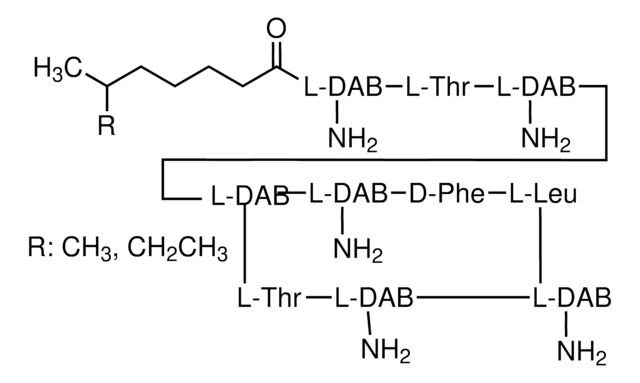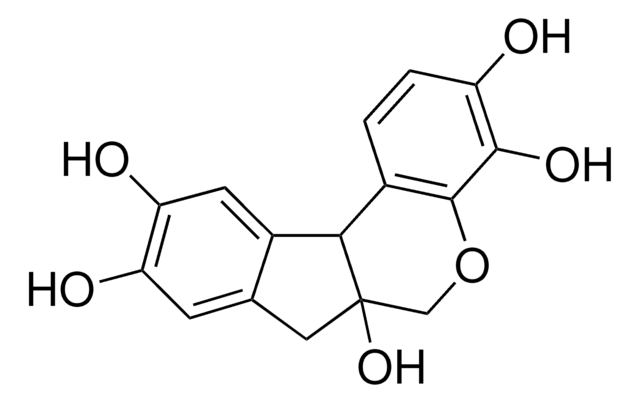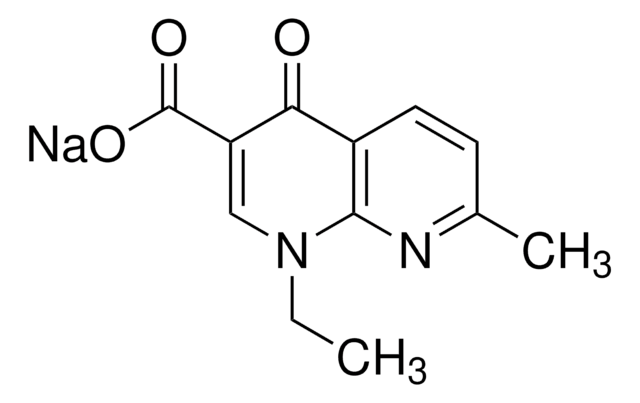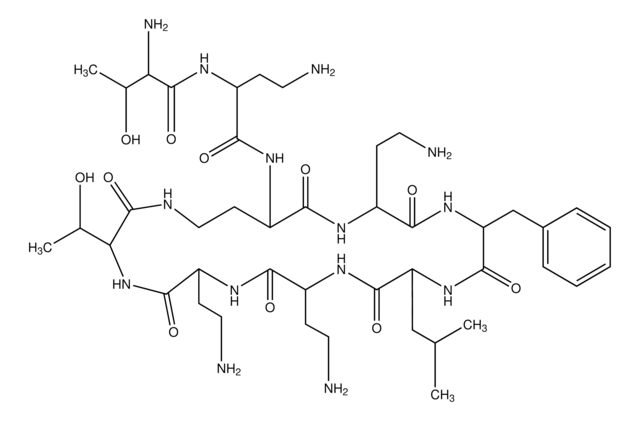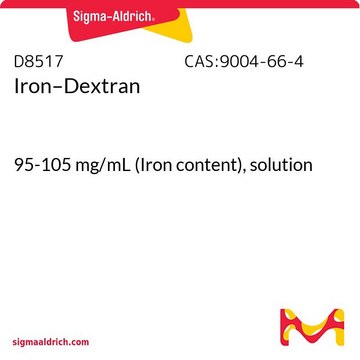5291
Polymyxin B Sulfate
Polymyxin B Sulfate, CAS 1405-20-5, is an antibiotic that is effective against Gram-positive bacteria. Inhibits phospholipid-sensitive Ca2+-dependent protein kinases.
Synonyme(s) :
Polymyxin B Sulfate, Aerosporin
About This Item
Produits recommandés
Niveau de qualité
Forme
solid
Fabricant/nom de marque
Calbiochem®
Conditions de stockage
OK to freeze
Couleur
white to off-white
Solubilité
water: 25 mg/mL
Conditions d'expédition
ambient
Température de stockage
10-30°C
InChI
1S/C48H82N16O13.H2O4S/c1-27(2)24-37-47(76)59-32(11-19-52)41(70)56-31(10-18-51)43(72)61-35(14-22-65)39(68)54-21-13-34(45(74)57-33(12-20-53)44(73)64-38(48(77)63-37)25-28-6-4-3-5-7-28)60-42(71)30(9-17-50)58-46(75)36(15-23-66)62-40(69)29(8-16-49)55-26-67;1-5(2,3)4/h3-7,26-27,29-38,65-66H,8-25,49-53H2,1-2H3,(H,54,68)(H,55,67)(H,56,70)(H,57,74)(H,58,75)(H,59,76)(H,60,71)(H,61,72)(H,62,69)(H,63,77)(H,64,73);(H2,1,2,3,4)
Clé InChI
HNDFYNOVSOOGDU-UHFFFAOYSA-N
Description générale
Application
- to neutralize the endotoxins in bovine serum albumin
- in the in vitro treatment of hepatic stellate cells (HSCs)
- as an antibiotic in collateral sensitivity and cross-resistance analysis in Escherichia coli
Actions biochimiques/physiologiques
Avertissement
Autres remarques
Ngezahayo, A. and Kolb, H.A. 1993. Pflugers Arch.422, 413.
Kubo, M. and Okada, Y. 1992. J. Physiol.456, 351.
Strasser, S.H., et al. 1992. Circ. Res.70, 1304.
Hegemann, L., et al. 1991. Eur. J. Pharmacol.207, 17.
Inaba, H. and Filkins, J.P. 1991. Am. J. Physiol.261, R26.
Marra, M.N., et al. 1990. J. Immunol.144, 662.
Informations légales
Mention d'avertissement
Warning
Mentions de danger
Conseils de prudence
Classification des risques
Acute Tox. 4 Oral
Code de la classe de stockage
11 - Combustible Solids
Classe de danger pour l'eau (WGK)
WGK 3
Point d'éclair (°F)
Not applicable
Point d'éclair (°C)
Not applicable
Certificats d'analyse (COA)
Recherchez un Certificats d'analyse (COA) en saisissant le numéro de lot du produit. Les numéros de lot figurent sur l'étiquette du produit après les mots "Lot" ou "Batch".
Déjà en possession de ce produit ?
Retrouvez la documentation relative aux produits que vous avez récemment achetés dans la Bibliothèque de documents.
Les clients ont également consulté
Notre équipe de scientifiques dispose d'une expérience dans tous les secteurs de la recherche, notamment en sciences de la vie, science des matériaux, synthèse chimique, chromatographie, analyse et dans de nombreux autres domaines..
Contacter notre Service technique